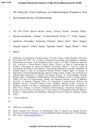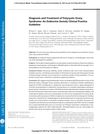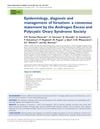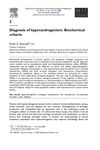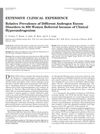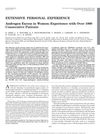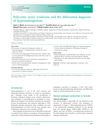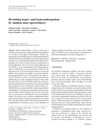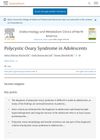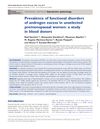Management of Endocrine Disease: Hyperandrogenic States in Women - Pitfalls in Laboratory Diagnosis
February 2018
in “
European Journal of Endocrinology
”
hyperandrogenic states PCOS androgen-secreting tumors total testosterone immunoassays anti-testosterone monoclonal antibodies LC-MS/MS SHBG free testosterone free-hormone hypothesis androstenedione adrenal androgen excess 17-hydroxyprogesterone NCAH LH secretion polycystic ovary syndrome sex hormone-binding globulin liquid chromatography-mass spectrometry non-classic adrenal hyperplasia luteinizing hormone
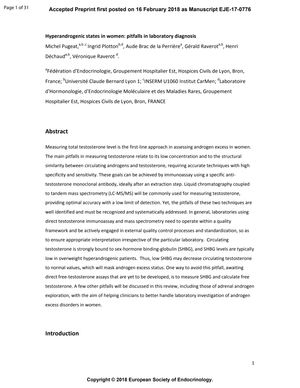
TLDR Diagnosing hyperandrogenism in women is complex and requires accurate testing methods and consideration of SHBG levels.
The document from April 1, 2018, addresses the complexities of diagnosing hyperandrogenic states in women, such as PCOS and androgen-secreting tumors. It outlines the limitations of measuring total testosterone due to low concentrations and structural similarities among androgens. The paper recommends using immunoassays with specific anti-testosterone monoclonal antibodies or LC-MS/MS for more accurate measurements, while also considering the pitfalls of these methods. It emphasizes the importance of measuring SHBG and calculating free testosterone to avoid misdiagnosis due to low SHBG levels in overweight patients. The document also discusses the free-hormone hypothesis, the inadequacy of commercial immunoassays for free testosterone, and the calculation of free testosterone from total testosterone and SHBG concentrations. Additionally, it explores the role of androgens and SHBG in LH secretion, the utility of measuring androstenedione, and the investigation of adrenal androgen excess. The largest multicenter trial indicated that a baseline 17-hydroxyprogesterone level above 10 ng/ml is sensitive for NCAH diagnosis. The conclusion is that a combination of total testosterone, androstenedione, and free testosterone measurements provides good diagnostic accuracy for PCOS and its sub-phenotypes, but more research is needed to predict metabolic risk in PCOS. Increased total testosterone level is the main indicator of hyperandrogenic states, and SHBG could be a marker for disorders like PCOS.
